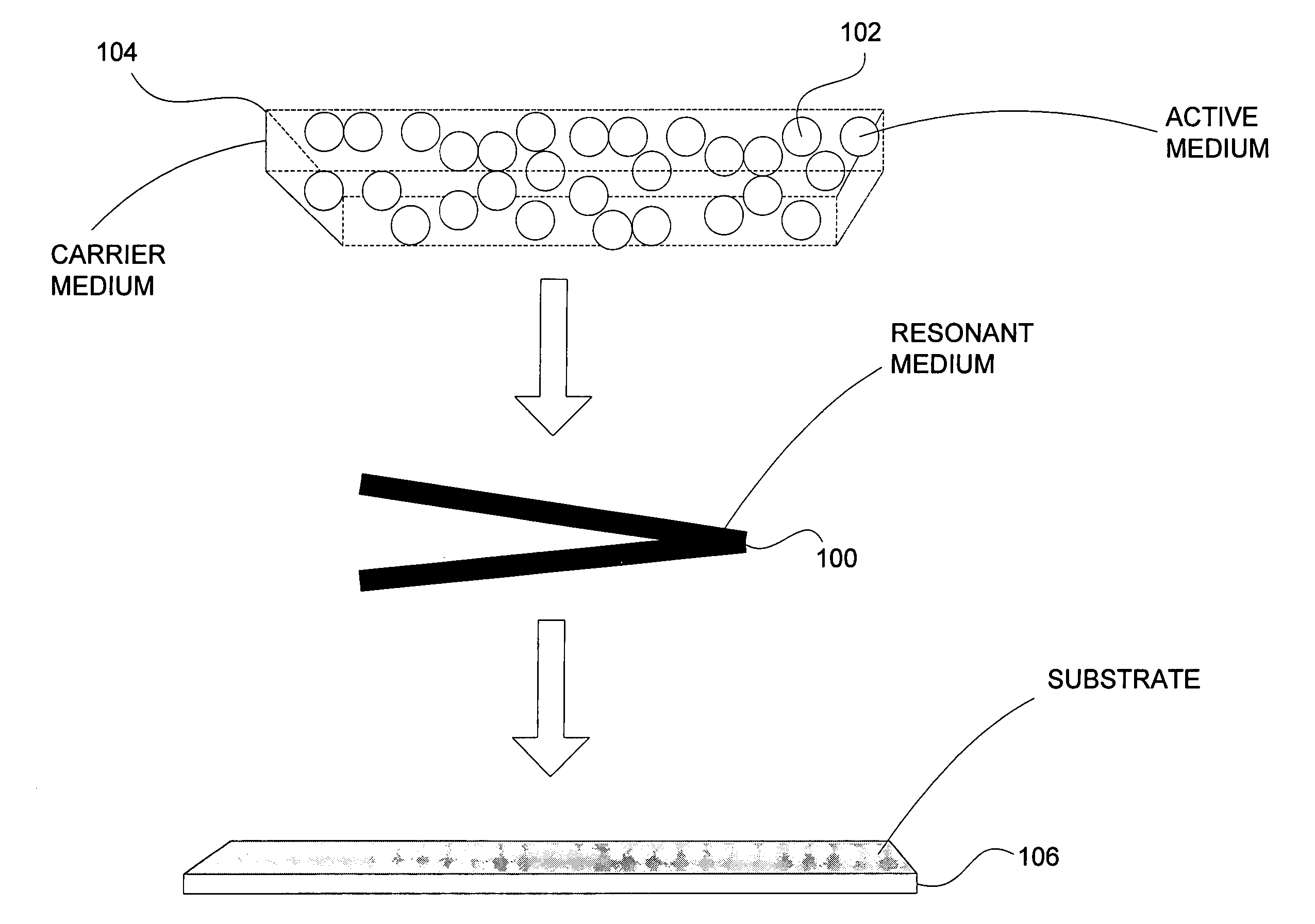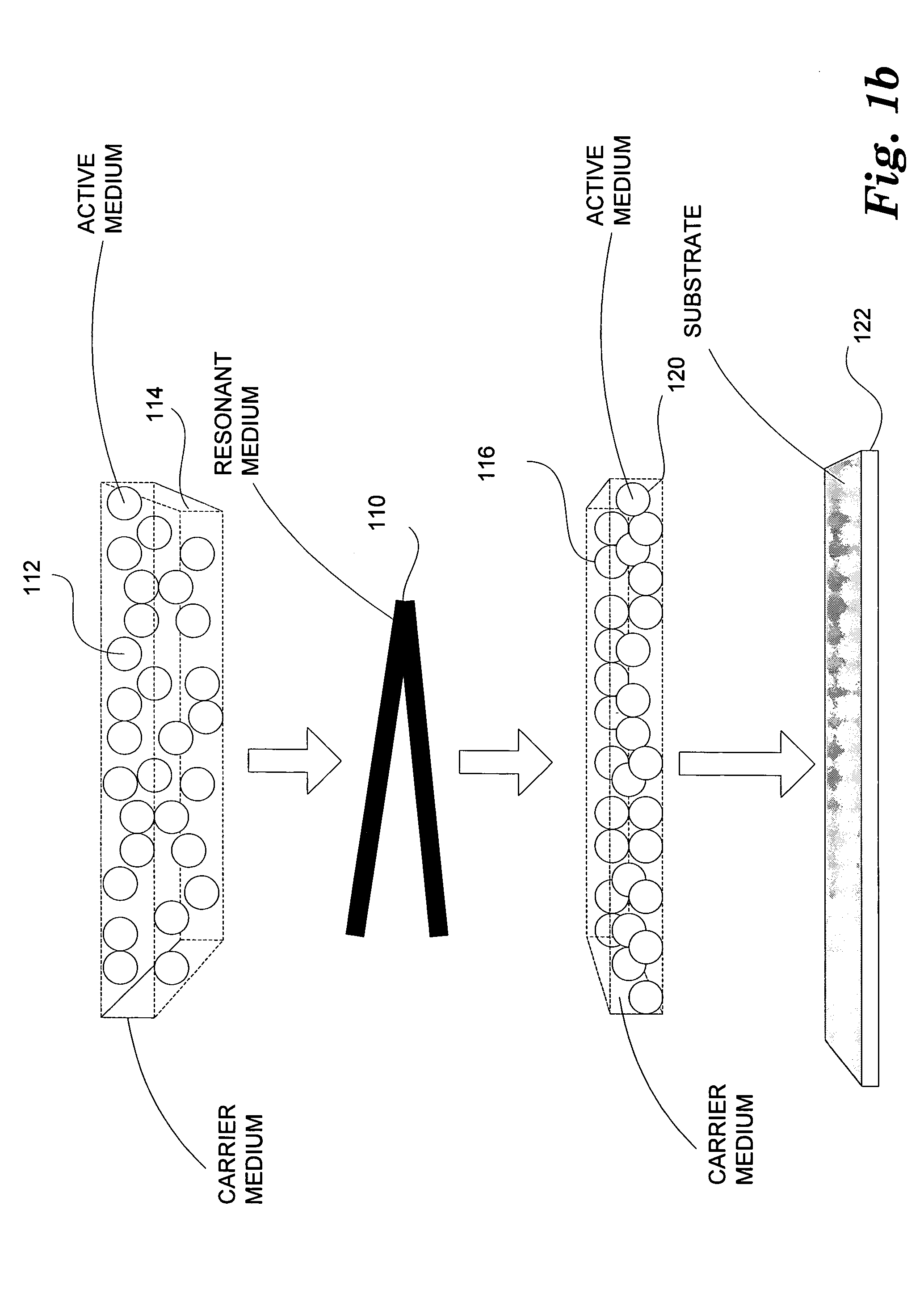Surface plasmon amplification by stimulated emission of radiation (SPASER)
a surface plasmon and radiation amplification technology, applied in the direction of fluorescence/phosphorescence, electrical excitation analysis, instruments, etc., can solve the problems of limited laser use, difficult or impossible control of properties, concentrated fraction of laser energy, etc., and achieve high localization
- Summary
- Abstract
- Description
- Claims
- Application Information
AI Technical Summary
Benefits of technology
Problems solved by technology
Method used
Image
Examples
Embodiment Construction
[0026]In exemplary embodiments of the present invention, a nanostructure is used to generate a highly localized nanoscale optical field. The optical field is excited using Surface Plasmon Amplification by Stimulated Emission of Radiation (SPASER). The SPASER radiation consists of surface plasmons that undergo stimulated emission, but in contrast to photons can be localized within a nanoscale region. A SPASER can incorporate an active medium formed by two-level emitters, excited by an energy source, such as an optical, electrical, or chemical energy source. The active medium may be quantum dots, which transfer excitation energy by radiationless transitions to a resonant nanosystem that can play the same role as a laser cavity in a conventional laser. The transitions are stimulated by the surface plasmons in the nanostructure, causing the buildup of a macroscopic number of surface plasmons in a single mode.
[0027]The SPASER may not emit light waves, because its two-level emitters under...
PUM
| Property | Measurement | Unit |
|---|---|---|
| radius | aaaaa | aaaaa |
| radius | aaaaa | aaaaa |
| radius | aaaaa | aaaaa |
Abstract
Description
Claims
Application Information
 Login to View More
Login to View More - R&D
- Intellectual Property
- Life Sciences
- Materials
- Tech Scout
- Unparalleled Data Quality
- Higher Quality Content
- 60% Fewer Hallucinations
Browse by: Latest US Patents, China's latest patents, Technical Efficacy Thesaurus, Application Domain, Technology Topic, Popular Technical Reports.
© 2025 PatSnap. All rights reserved.Legal|Privacy policy|Modern Slavery Act Transparency Statement|Sitemap|About US| Contact US: help@patsnap.com



